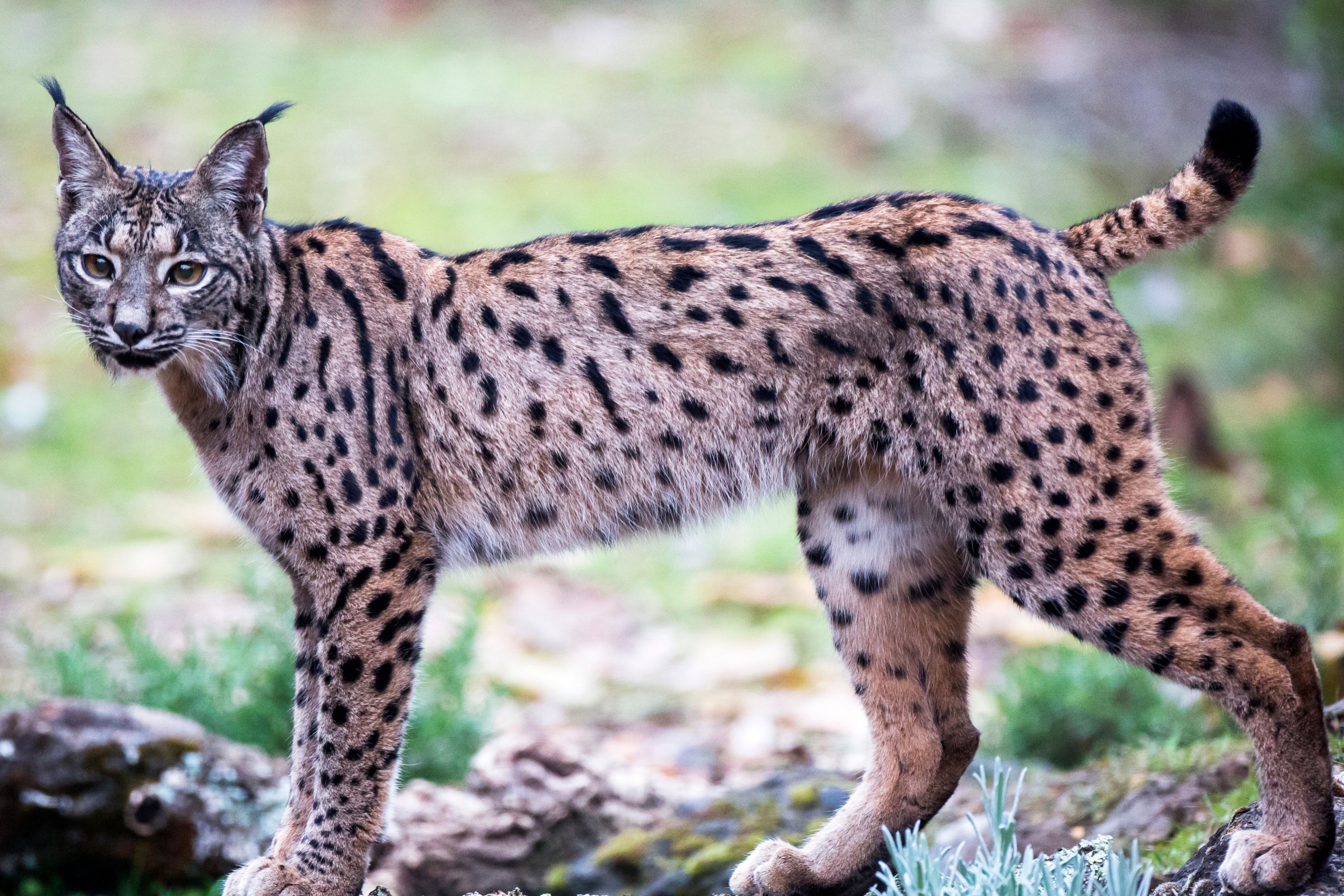Iberian lynx
(Lynx pardinus)

Description
The Iberian lynx (Lynx pardinus) is a wild cat species endemic to the Iberian Peninsula in southwestern Europe. It is listed as Endangered on the IUCN Red List. In the 20th century, the Iberian lynx population had declined because of overhunting, poaching, fragmentation of suitable habitats, and the population decline of its main prey species, the European rabbit (Oryctolagus cuniculus), caused by myxomatosis and rabbit haemorrhagic disease. By the turn of the 21st century, the Iberian lynx was on the verge of extinction, as only 94 individuals survived in two isolated subpopulations in Andalusia in 2002. Conservation measures have been implemented since then, which included improving habitat, restocking of rabbits, translocating, reintroducing and monitoring Iberian lynxes. By 2012, the population had increased to 326 individuals, to 855 in 2020, and to 1,111 in 2021. It is a monotypic species, and is thought to have evolved from Lynx issiodorensis. The Iberian lynx was once present throughout the Iberian Peninsula. In the 1950s, the northern population extended from the Mediterranean to Galicia and parts of northern Portugal, and the southern population from central to southern Spain. Populations declined from 15 subpopulations in the 1940s to only two subpopulations in the early 1990s, most noticeably in Montes de Toledo and Sierra Morena. Before 1973, it was present in Sierra de Gata, Montes de Toledo, eastern Sierra Morena, Sierra de Relumbrar and coastal plains in the Doñana area. Between the early 1960s and 2000, it has lost about 80% of its former range. In 2012, it was restricted to very limited areas in southern Spain, with breeding only confirmed in Sierra Morena and Doñana coastal plains. As of 2014, its range included the Sierra Morena and Montes de Toledo of Castilla-La Mancha and the Matachel Valley of Extremadura in Spain, and the Guadiana Valley in Portugal. Fossil remains indicate that the Iberian lynx had a wider range during the Late Pleistocene and early Holocene. Five lynx remains found in Arene Candide in northern Italy date to about 24,820–18,620 before present. One specimen found in Cabias cave in southern France was radiocarbon dated to 3780±90 before present. In 2021, a large concentration of Iberian lynxes dating to 40,000 years ago were identified for the first time in southern Italy, at the fossil site of Ingarano in Apulia.
Taxonomic tree:







